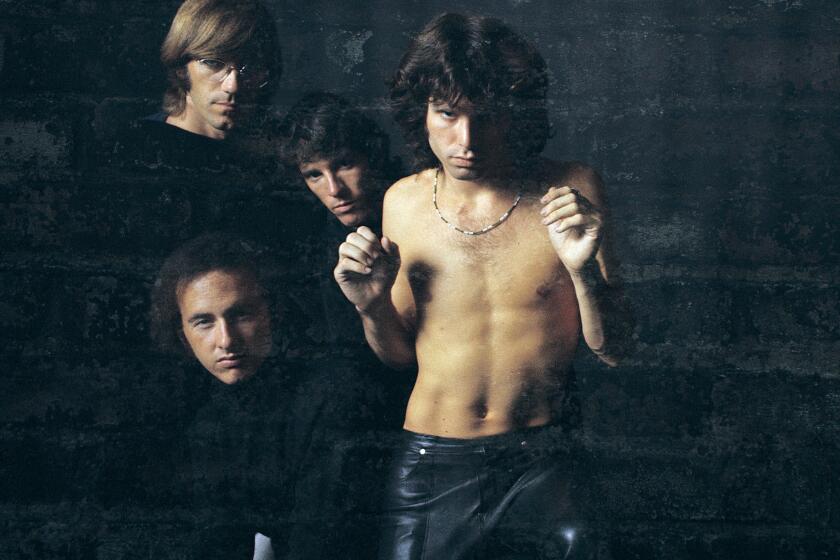Tabackin Tests Limits With Humor, Feeling
- Share via
Many of the jazz world’s best artists carry on a career without help from major record labels. Case in point: saxophonist-flutist Lew Tabackin.
Tabackin, who opened a three-day run at Steamers Cafe in Fullerton on Friday, is no stranger to high-profile recording companies, having released a handful of documents for Concord in this decade and, with wife Toshiko Akiyoshi’s Jazz Orchestra, for Columbia in the 1980s. But in the new world of bottom-line thinking and jazz label consolidation (the Verve Music Group recently swallowed the GRP and Impulse! labels in a move promised to send even more established musicians packing), Tabackin--arguably among the top tenor players and the jazz world’s single best flutist--goes unrepresented.
The crime of that oversight was apparent in Tabackin’s first set Friday, an hour of music that found him acquainting himself with old friends--drummer Joe LaBarbera, pianist Alan Broadbent and new bassist Darek Oles.
The New York-based Tabackin avoided play-it-safe, pick-up band material. Instead, he challenged them with original material and unpredictable treatments of standards.
His bandmates rose to the task in sterling fashion, but it was Tabackin’s playing that propelled the performance. An aggressive player with an unending stream of ideas, the tenor player constantly pushed himself into more and more outrageously phrased statements. Blessed with an active sense of humor, Tabackin frequently hinted at other tunes as he soloed, working these suggestions into his play in seamless fashion.
His sense of humor extended to his tune selection, displayed as he rambled through “Me and My Shadow” in a parody of Ted Lewis’ style. And when introducing his own “Chasin’ the Carrot,” he called it a metaphor of the human condition: “You can’t win, but you can try.”
Tabackin also was deadly serious even as he joked. His lines developed in intensity as he improvised. His tone, sometimes roughly hewn, sometimes golden, defined the music’s mood. He waved off all but one member of the rhythm section in each tune, pairing himself against Broadbent on “The Meaning of the Blues” and with LaBarbera on “Chasin’ the Carrot.” His play in these duo situations was among his most inspired.
*
Tabackin picked up the flute to play “Desert Lady,” his title song from a 1990 album that included the top-shelf rhythm section of pianist Hank Jones, bassist Dave Holland and drummer Victor Lewis. While his play incorporated many of the same facets that make his tenor work so appealing--stream of consciousness solos, careful attention to tone and resonance--his approach showed another side of his personality. Using Middle Eastern intervals and suggestions of Japanese flute traditions, he sailed above the moody tune’s bass mode with grace, speed and substance.
Broadbent used “Desert Lady” to create a detailed solo, one full of lush chords, counterpoint right- and left-hand melodies and flying melodic runs. Drummer LaBarbera, whom Tabackin told the audience he first met in San Francisco when the drummer was with Tony Bennett, brought his usual drive and accomplished sense of accent to the proceedings. Oles, a stalwart throughout the set, recalled bassist Charlie Haden as he soloed on “Desert Flower.”
That the group came together so tightly without a rehearsal, even at the most breakneck tempos, spoke of their professionalism. That they did so with a depth of feeling unusual in even the best sessions made this evening rare and extremely satisfying.
Tabackin, like so many other outstanding musicians of his generation, may be ignored by the record companies. But that didn’t stop him from making music better than almost anything heard on record.
More to Read
The biggest entertainment stories
Get our big stories about Hollywood, film, television, music, arts, culture and more right in your inbox as soon as they publish.
You may occasionally receive promotional content from the Los Angeles Times.










